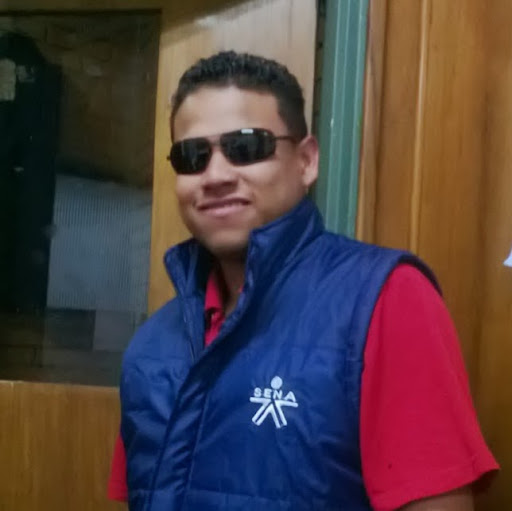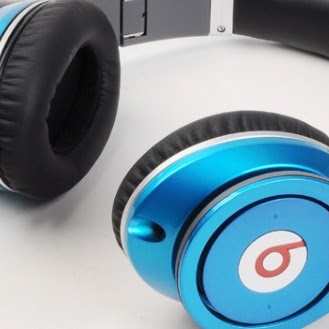Joseph Mark
age ~57
from Middletown, CT
Joseph Mark Phones & Addresses
- Middletown, CT
- 7361 Artesia Blvd, Buena Park, CA 90621
- 7361 Artesia Blvd #3, Buena Park, CA 90621
- La Mirada, CA
Resumes

Joseph Mark
view source
Joseph Mark
view source
Joseph Mark
view source
Joseph Mark
view source
Joseph Mark
view source
Yahoo
view sourceWork:
Yahoo! Japan
Yahoo
Yahoo

Joseph Mark
view source
Joseph Mark
view sourceLocation:
United States
Lawyers & Attorneys

Joseph Mark - Lawyer
view sourceOffice:
Moye White LLP
Specialties:
Personal Injury and Property Damage Defense
Commercial Litigation
Product Liability
Sports and Recreation
Appellate
Professional Liability
Workers’ Compensation
Commercial Litigation
Product Liability
Sports and Recreation
Appellate
Professional Liability
Workers’ Compensation
ISLN:
1000243372
Admitted:
2015
University:
University of Denver, B.A., 2010
Law School:
University of Denver, Sturm College of Law, J.D., 2015
Medicine Doctors

Joseph E. Mark
view sourceSpecialties:
Plastic Surgery
Work:
Plastic Surgery Arts & Spa
1886 W Auburn Rd STE 200, Rochester, MI 48309
2486060000 (phone), 2486060001 (fax)
1886 W Auburn Rd STE 200, Rochester, MI 48309
2486060000 (phone), 2486060001 (fax)
Education:
Medical School
SUNY Downstate Medical Center College of Medicine
Graduated: 1968
SUNY Downstate Medical Center College of Medicine
Graduated: 1968
Procedures:
Breast Reconstruction
Rhinoplasty
Rhinoplasty
Languages:
English
Spanish
Spanish
Description:
Dr. Mark graduated from the SUNY Downstate Medical Center College of Medicine in 1968. He works in Rochester Hills, MI and specializes in Plastic Surgery. Dr. Mark is affiliated with Crittenton Hospital Medical Center.

Joseph Eliot Mark
view sourceSpecialties:
Plastic Surgery
Education:
State University of New York Downstate (1968)
Name / Title
Company / Classification
Phones & Addresses
BREAK-THROUGH, LLC
Mark Designs
Architect · Basement Remodeling · Remodeling · Bathroom & Kitchen Remodeling · Sunrooms · Structural Engineer
Architect · Basement Remodeling · Remodeling · Bathroom & Kitchen Remodeling · Sunrooms · Structural Engineer
24451 Muela, Mission Viejo, CA 92692
9498290362, 9494139057
9498290362, 9494139057
Us Patents
-
Tissue Collection Tray
view source -
US Patent:7798331, Sep 21, 2010
-
Filed:Feb 20, 2008
-
Appl. No.:12/033967
-
Inventors:Terry D. Hardin - Irvine CA, US
Joseph L. Mark - Indianapolis IN, US -
Assignee:Suros Surgical Systems, Inc. - Indianapolis IN
-
International Classification:B65D 6/04
A61B 17/02
A61B 10/02 -
US Classification:206561, 206438, 206564, 206569, 600562, 600567
-
Abstract:A tissue collection tray is described for use with a biopsy device. The tissue collection tray includes a well portion, a body portion and a divider. The well portion is defined by first and second ends, a bottom and at least two walls. The body portion includes a recess formed therein. The divider includes a groove formed therein. The divider is positioned between the recess and the well portion.
-
Vacuum Assisted Biopsy Device
view source -
US Patent:7988642, Aug 2, 2011
-
Filed:Feb 28, 2008
-
Appl. No.:12/039364
-
Inventors:Terry D. Hardin - Irvine CA, US
Joseph L. Mark - Indianapolis IN, US
William O. Hodge - Greenfield IN, US
Zachary R. Nicoson - Indianapolis IN, US
Michael E. Miller - Trafalgar IN, US -
Assignee:Suros Surgical Systems, Inc. - Indianapolis IN
-
International Classification:A61B 10/02
-
US Classification:600566
-
Abstract:A biopsy device is disclosed that comprises a cutting element mounted to a handpiece and a vacuum chamber. The cutting element comprises a stylet assembly and an outer cannula assembly. The stylet assembly includes a stylet that includes an open proximal end and a tissue opening at a distal end thereof. The tissue receiving opening is in communication with a lumen extending through the stylet. The outer cannula assembly includes an outer cannula that is slidably mounted over the stylet and has an open distal end with a cutting edge formed thereon. The vacuum chamber is in communication with the lumen of the stylet. The stylet is selectively advanced distally outwardly with respect to outer cannula to expose the tissue opening to targeted tissue. The outer cannula is selectively advanced over the tissue opening to sever tissue, while vacuum is generated in the vacuum chamber and delivered to the tissue opening through the lumen. The vacuum causes tissue to be drawn into and maintained in the tissue opening while the outer cannula severs tissue to obtain a biopsy core.
-
Apparatus For Minimally Invasive Tissue Removal
view source -
US Patent:54032768, Apr 4, 1995
-
Filed:Feb 16, 1993
-
Appl. No.:8/018045
-
Inventors:Alan M. Schechter - Long Beach CA
Joseph L. Mark - Indianapolis IN
Frederick R. Stave - St. Joseph MI -
Assignee:Danek Medical, Inc. - Memphis TN
-
International Classification:A61B 1720
-
US Classification:604 22
-
Abstract:An apparatus for minimally invasive tissue removal contemplates a system including a tissue cutting tool having a motor driven cut-ting blade reciprocating within a percutaneously introducable cannula. In accordance with one method of the invention, the frequency of reciprocation of the cutting blade is tuned to a characteristic frequency of the target tissue to be excised, which frequency is a function of certain properties of the target tissue and the surrounding tissue. Cutting at the characteristic frequency of the target tissue not only enhances the speed and efficiency of the tissue excision, but also minimizes the risk of cutting surrounding tissue. Another aspect of the system includes feedback control of both aspiration and irrigation circuits of the system. With the feedback control, coupled with user settable inputs, the surgeon can control the system to "tease" tissue into the cutting opening to provide more manageable bite sizes of the excised tissue. Controllable valves and pressure transducers allow the operator to set and maintain the aspiration vacuum and irrigation pressure at optimum levels.
-
Method For Minimally Invasive Tissue Removal
view source -
US Patent:56698763, Sep 23, 1997
-
Filed:Oct 6, 1994
-
Appl. No.:8/319126
-
Inventors:Alan M. Schechter - Long Beach CA
Joseph L. Mark - Indianapolis IN -
Assignee:Danek Medical, Inc. - Memphis TN
-
International Classification:A61M 3100
-
US Classification:604 50
-
Abstract:A method and apparatus minimally invasive tissue removal contemplates a system including a tissue cutting tool having a motor driven cutting blade reciprocating within a percutaneously introducable cannula. In accordance with one method of the invention, the frequency of reciprocation of the cutting blade is tuned to a characteristic frequency of the target tissue to be excised, which frequency is a function of certain properties of the target tissue and the surrounding tissue. Cutting at the characteristic frequency of the target tissue not only enhances the speed and efficiency of the tissue excision, but also minimizes the risk of cutting surrounding tissue. Another aspect of the system includes feedback control of both aspiration and irrigation circuits of the system. With the feedback control, coupled with user settable inputs, the surgeon can control the system to "tease" tissue into the cutting opening to provide more manageable bite sizes of the excised tissue. Controllable valves and pressure transducers allow the operator to set and maintain the aspiration vacuum and irrigation pressure at optimum levels.
-
Method And Apparatus For Minimally Invasive Tissue Removal
view source -
US Patent:56858400, Nov 11, 1997
-
Filed:Jun 7, 1995
-
Appl. No.:8/486350
-
Inventors:Alan M. Schechter - Long Beach CA
Frederick R. Stave - St. Joseph MI
Joseph L. Mark - Indianapolis IN -
Assignee:Danek Medical, Inc. - Memphis TN
-
International Classification:A61B 1720
-
US Classification:604 22
-
Abstract:A method and apparatus for minimally invasive tissue removal contemplates a system including a tissue cutting tool having a motor driven cutting blade reciprocating within a percutaneously introducable cannula. In accordance with one method of the invention, the frequency of reciprocation of the cutting blade is tuned to a characteristic frequency of the target tissue to be excised, which frequency is a function of certain properties of the target tissue and the surrounding tissue. Cutting at the characteristic frequency of the target tissue not only enhances the speed and efficiency of the tissue excision, but also minimizes the risk of cutting surrounding tissue. Another aspect of the system includes feedback control of both aspiration and irrigation circuits of the system. With the feedback control, coupled with user settable inputs, the surgeon can control the system to "tease" tissue into the cutting opening to provide more manageable bite sizes of the excised tissue. Controllable valves and pressure transducers allow the operator to set and maintain the aspiration vacuum and irrigation pressure at optimum levels.
-
Method And Apparatus For Minimally Invasive Tissue Removal
view source -
US Patent:56433042, Jul 1, 1997
-
Filed:Jun 7, 1995
-
Appl. No.:8/483385
-
Inventors:Alan M. Schechter - Long Beach CA
Joseph P. Mark - Indianapolis IN
Frederick R. Stave - St. Joseph MI
Roger White - Memphis TN -
Assignee:Danek Medical, Inc. - Memphis TN
-
International Classification:A61B 1732
-
US Classification:606171
-
Abstract:A method and apparatus for minimally invasive tissue removal contemplates a system including a tissue cutting tool having a motor driven cutting blade reciprocating within a percutaneously introducable cannula. In accordance with one method of the invention, the frequency of reciprocation of the cutting blade is tuned to a characteristic frequency of the target tissue to be excised, which frequency is a function of certain properties of the target tissue and the surrounding tissue. Cutting at the characteristic frequency of the target tissue not only enhances the speed and efficiency of the tissue excision, but also minimizes the risk of cutting surrounding tissue. Another aspect of the system includes feedback control of both aspiration and irrigation circuits of the system. With the feedback control, coupled with user settable inputs, the surgeon can control the system to "tease" tissue into the cutting opening to provide more manageable bite sizes of the excised tissue. Controllable valves and pressure transducers allow the operator to set and maintain the aspiration vacuum and irrigation pressure at optimum levels.
-
Breast Biopsy And Needle Localization Using Tomosynthesis Systems
view source -
US Patent:20200390404, Dec 17, 2020
-
Filed:Jul 23, 2020
-
Appl. No.:16/936550
-
Inventors:- Marlborough MA, US
John LAVIOLA - Orange CT, US
Loren Thomas NIKLASON - Hillsborough NC, US
Tao WU - Brookfield CT, US
Joseph MARK - Indianapolis IN, US
Michael MILLER - Trafalgar IN, US
Jay STEIN - Boston MA, US
Andrew SMITH - Lexington MA, US -
Assignee:Hologic, Inc. - Marlborough MA
-
International Classification:A61B 6/02
A61B 90/17
A61B 90/11
A61B 6/04
A61B 6/00
A61B 10/02 -
Abstract:Methods, devices, apparatuses and systems are disclosed for performing mammography, such as utilizing tomosynthesis in combination with breast biopsy.
-
Breast Biopsy And Needle Localization Using Tomosynthesis Systems
view source -
US Patent:20200046303, Feb 13, 2020
-
Filed:Jun 6, 2019
-
Appl. No.:16/434064
-
Inventors:- Marlborough MA, US
John LAVIOLA - Orange CT, US
Loren Thomas NIKLASON - Hillsborough NC, US
Tao WU - Brookfield CT, US
Joseph L. MARK - Indianapolis IN, US
Michael E. MILLER - Trafalgar IN, US
Jay A. STEIN - Boston MA, US
Andrew P. SMITH - Lexington MA, US -
International Classification:A61B 6/02
A61B 90/17
A61B 90/11
A61B 6/04
A61B 6/00
A61B 10/02 -
Abstract:Methods, devices, apparatuses and systems are disclosed for performing mammography, such as utilizing tomosynthesis in combination with breast biopsy.
Youtube
Myspace

Joseph Mark
view sourceFlickr
Plaxo

Joseph Mark
view sourceSenior Mortgage Consultant at SunTrust Mortgage

Joseph Marks
view sourceMinneapolis, MN

Mark Joseph
view source701 Civic Center Blvd. Suisun City, CA 94585

Mark Joseph
view sourceCape Town, South Africa

Mark Joseph
view sourceUSG
Classmates

Joseph Mark
view sourceSchools:
Johnson High School Mt. Morris MI 1975-1979
Community:
Vickie Copeland, Lynn Frizzell, Agnes Nettleton

Joseph Mark
view sourceSchools:
Herndon High School Herndon VA 2002-2006

Joseph Mark
view sourceSchools:
Wooster High School Reno NV 1976-1980
Community:
Linda Cheel, Yvette Lopez

Joseph Mark
view sourceSchools:
Maria High School Chicago IL 1979-1983
Community:
Robert Foley, Rebecca Montalvo, Karen Reed, Karen Gomolka

Joseph Mark
view sourceSchools:
St. Mary's College Port-of-spain NH 1962-1966

Joseph Mark (Joseph Mark)
view sourceSchools:
Alexander High School Alexander NY 2001-2005
Community:
Stacey Flint, Zameer Ahmed, Bill Rupp, Chelsea Harmon, Amberly Kuhl, Danielle Snyder, Katherine Buckenmeyer, Krystal Haskins, Sarah Hanlon, Samantha Redden, Lilia Dlaboha, Andrew Cuer

Joseph Mark
view sourceSchools:
Yeshiva of Central Queens Jamaica NY 1970-1974
Community:
Gil Bloom, Randi Luxenberg, Joseph Musumeci, Peter Izaak, Deborah Wunsch

Joseph Mark (MacAdam)
view sourceSchools:
Indian Valley High School Gnadenhutten OH 2004-2008
Community:
Helen Gribble, Lianne Dunaway, Dee Starcher
Googleplus

Joseph Mark
Relationship:
Single

Joseph Mark

Joseph Mark

Joseph Mark

Joseph Mark

Joseph Mark

Joseph Mark

Joseph Mark

Joseph Mark
view source
Joseph Mark
view source
Joseph Mark Dominic Masca...
view source
Joseph Mark
view source
Joseph Mark
view source
Joseph Mark
view source
Joseph Mark Santiago
view source
Joseph Kypot Mark
view sourceGet Report for Joseph Mark from Middletown, CT, age ~57













